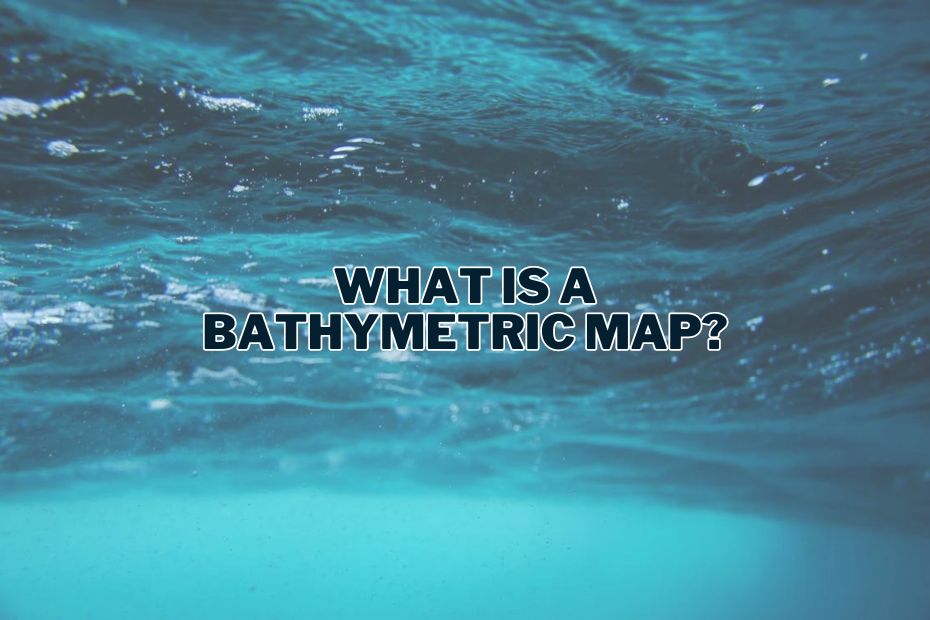Embark on an underwater exploration without leaving your seat. Bathymetric maps are not just charts; they are windows to the unseen world beneath our oceans and lakes. These maps guide us through the valleys and mountains submerged in water, much like how topographic maps detail the Earth’s surface. In this article, we delve into the intricacies of bathymetric maps (What is a bathymetric map?), uncovering their significance, applications, and the technology behind them.
Unlike geographical maps that detail the surface of the earth, bathymetric maps chart the depths of bodies of water, providing critical data on underwater features such as mountains, valleys, plains, and trenches.
Where Did the Word Bathymetry Come From?
The term “bathymetry” is derived from Greek words: “bathys,” meaning deep, and “metron,” meaning measure.
It represents the science of measuring water depth, whether in oceans, seas, or lakes, providing a detailed dimensional view of underwater features.
Why is Bathymetry Important?
Bathymetry plays a crucial role in marine navigation, environmental monitoring, and geological research.
It helps in the safe navigation of vessels, understanding marine ecosystems, planning underwater construction, and studying geological processes like plate tectonics and underwater eruptions.
What Do the Colours Denote in a Bathymetric Chart?
Colors in a bathymetric chart vary from light blues to dark blues, indicating shallow to deep waters, respectively.
Each color shade represents a different depth range, making it easier to visualize the seabed’s topography.
What Does a Bathymetric Map Show?
A bathymetric map shows the underwater topography of ocean floors, lakes, or rivers by detailing depth contours, underwater features, and surface navigational information. It’s akin to a topographic map but for underwater landscapes.
At the core of a bathymetric map are contour lines, each representing a specific depth below the water surface. These lines are analogous to the contour lines on topographic maps, but instead of showing elevation on land, they show depth in water bodies.
The spacing between these lines indicates the slope of the underwater terrain; closely spaced lines signify steep areas, while widely spaced lines denote gentle slopes.
Techniques for Creating Bathymetric Maps
The creation of bathymetric maps involves sophisticated technology and meticulous data collection efforts. One of the primary methods used is sonar (Sound Navigation and Ranging), which utilizes sound waves to measure the distance to the seabed.
By analyzing the time it takes for sound waves to travel to the ocean floor and bounce back, researchers can accurately determine depth and map underwater features.
Another technique employed in bathymetric mapping is multibeam sonar, which emits multiple sonar beams in various directions simultaneously. This allows for the rapid acquisition of high-resolution data over a wide area, enabling scientists to create detailed maps of underwater terrain with unprecedented accuracy.
What is Bathymetric Data Used For?
The practical applications of bathymetric maps are diverse and far-reaching. In marine navigation, these maps ensure safe passage for ships by identifying navigable routes and highlighting underwater hazards.
In marine construction, they guide the development of offshore structures like oil rigs, wind farms, and undersea cables.
Moreover, bathymetric maps are instrumental in environmental conservation, aiding in the monitoring of marine habitats and the assessment of environmental changes such as sea-level rise.
Navigational Aid
Bathymetric maps play a crucial role in maritime navigation, helping sailors, fishermen, and marine scientists navigate safely through unfamiliar waters.
By identifying underwater hazards such as submerged rocks, reefs, and shallow areas, these maps contribute to the safety and efficiency of maritime operations.
Environmental Research
In environmental research, bathymetric maps are invaluable tools for studying marine ecosystems, seafloor geology, and ocean currents.
By analyzing underwater topography, scientists can better understand the dynamics of marine habitats, track changes over time, and monitor the impacts of human activities such as fishing and climate change.
Resource Exploration
Bathymetric mapping is also utilized in the exploration and exploitation of marine resources such as oil, gas, and minerals.
By surveying the seabed and identifying potential geological formations, companies can assess the viability of extraction operations and plan resource development strategies accordingly.
Conclusion
Bathymetric maps are indispensable tools in exploring and understanding the hidden contours of the world’s water bodies. Through the meticulous charting of underwater topography, these maps not only facilitate safe navigation and sustainable marine development but also contribute to our knowledge of the earth’s dynamic underwater environments.
As technology progresses, the scope and accuracy of bathymetric maps will continue to expand, offering deeper insights into the mysteries of the deep sea.
FAQs: What Is A Bathymetric Map?
How accurate are bathymetric maps?
Bathymetric maps can vary in accuracy depending on the technology used and the quality of the data collected. However, modern mapping techniques have significantly improved accuracy levels, allowing for the creation of highly detailed and precise maps.
Are bathymetric maps only used for marine environments?
While bathymetric maps are commonly associated with oceanography, they can also be applied to inland bodies of water such as lakes and rivers. Any water body with significant depth variations can benefit from bathymetric mapping.
Can bathymetric maps reveal underwater features other than depth?
Yes, bathymetric maps can provide insights into various underwater features, including submerged geological formations, underwater canyons, and seamounts.
How often are bathymetric maps updated?
The frequency of bathymetric map updates depends on factors such as the rate of environmental change, the availability of new data, and the specific requirements of end-users. In rapidly changing environments, such as coastal areas prone to erosion or sedimentation, maps may require more frequent updates.
